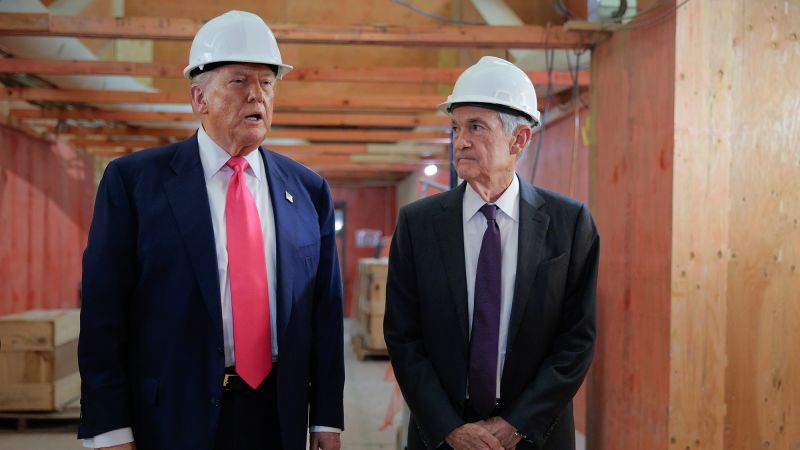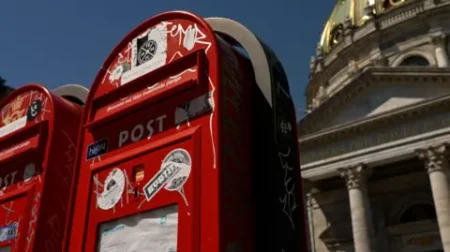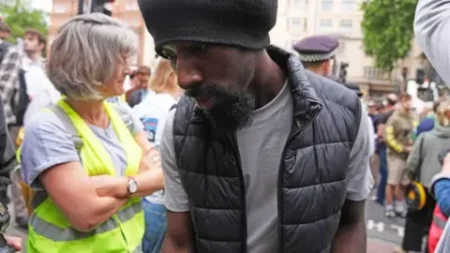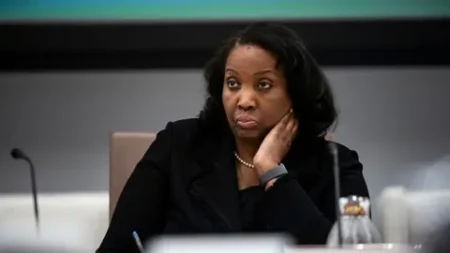In a recent press briefing held amidst a tour of the Federal Reserve’s ongoing renovation, tensions between President Donald Trump and Federal Reserve Chair Jerome Powell reached an evident peak. The humorous yet awkward interaction served as a microcosm of their complex relationship, highlighting Trump’s ongoing critique of Powell regarding monetary policy and cost overruns. As Trump touted the costs of the renovation project at an inflated figure of $3.1 billion, Powell’s response, marked by disbelief and correction, illustrated the gap in their understanding of the situation.
During the encounter, after Trump mischievously stated that the renovation costs had ballooned significantly, Powell’s facial expressions revealed mounting disbelief. The typically stoic Powell could hardly disguise his surprise at Trump’s inflated figures, and the tension escalated as Trump confidently presented Powell with a document to back his claims. As Powell donned his reading glasses to assess the details, he began to unravel the discrepancy, clarifying that the number mentioned by Trump mistakenly included costs from the Martin renovation project, a facility completed years earlier.
“I’m not aware of that,” Powell asserted, attempting to steer the conversation to more accurate grounds. Despite Trump’s persistent insistence that the figures were correct, Powell interjected with factual clarity, noting that the Martin building had already been finished five years prior. This assertion was critical, not only in correcting Trump’s misunderstanding but also in reinforcing Powell’s position as Fed chair amid the ongoing critiques from the president. The ensuing exchange not only showcased Powell’s commitment to transparency but also illustrated an underlying power dynamic where Powell stood his ground against Trump’s assertiveness.
The awkward silence that followed this verbal sparring further emphasized the tension, with Powell struggling to encapsulate the inaccuracies of Trump’s claims, while Trump continued to display a casual demeanor, jokingly referencing his experience as a real estate developer. The contrast between their attitudes brought underlying issues regarding fiscal accountability and the authority of economic institutions into sharp relief, underscoring the implications of a president challenging an independent central bank.
Despite the earlier exchange, Trump sought to downplay tensions post-tour, expressing a desire to see the renovation completed without dwelling on potential blame for budget overruns. His cautious remarks, indicating he felt there was “no tension” with Powell, stood in stark contrast to his previous criticisms that had painted a picture of animosity. Although Trump teased Powell about interest rates, he refrained from outright hostility as he navigated the political landscape, seemingly realizing the praise he had shamelessly shared could influence public perception positively.
Acknowledging the complex nature of leadership between the two figures, Trump reaffirmed his faith in Powell’s capabilities but maintained that he was considering replacements for the Fed chair’s position, suggesting he had a couple of candidates in mind. This duality encapsulated a tension-filled narrative that not only reflected issues of governance but also highlighted the psychological maneuvering inherent within the Trump presidency, particularly as it pertains to monetary policy and economic stewardship.
Furthermore, Trump’s history of accusing Powell of playing politics adds an additional layer to their relationship, prompting essential discussions around the independence of the Federal Reserve. The interplay between personal dynamics and professional responsibilities introduced questions about the influence of political leaders over central banking matters—particularly relevant as Powell contended with the broader economic implications of Trump’s trade policies and fiscal management strategies. Thus, this encounter was emblematic of larger themes concerning accountability, leadership, and the intricate dance between presidential authority and the autonomy of economic institutions in the political arena.












